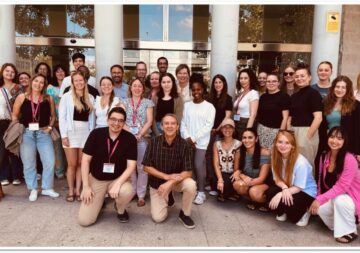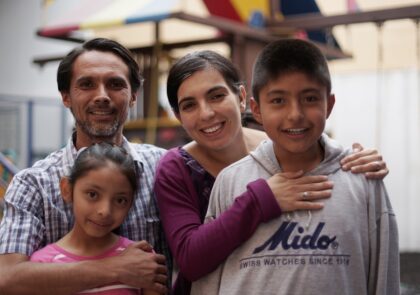
Ideology of multiculturalism was born when building a western welfare state. The idea was that in a multicultural society, equal respect would replace common culture as a nation’s social cement. However, there has been a real kick-back towards multiculturalism in recent years because of rising of immigration numbers in Europe, including Finland, and because the welfare state itself is under pressure. In this article, it is reflected, that if idea of multiculturalism has ended, then the question is: how do we overcome hurdles of immigration without widening social exclusion? This affects how we plan social policy and especially service system for immigrants and refugees. Because LAB develop service systems through projects, RDI specialist should be aware of changing perspective of policy making.
Author: Vappu Myllärinen
Immigration affecting policy making in Europe
Increasing numbers of people are crossing the borders of Europe. They must overcome many great frontiers before they can build their lives again: including a frontier of changing identity as they realise that they have roots and commitments in a new country as well as an old homeland. Without a doubt, international migration poses a challenge for any nation, but the focus here is in western countries. As far as EU countries are concerned, a distinction has been made between immigrants originating from other EU countries whose legal status in many respects equals that of local citizens, and those coming from countries outside the Union. The latter constitutes the core of the immigration issue.
Multiculturalism became, in the light of immigration, as an attempt to achieve a balance between inclusion and exclusion. In the mature nation-state, the period after the Second World War, citizenship became extended in separate ways. Civic and political rights developed into social rights like described by Marshall (1992), and immigrants, though denied political rights, were able to enjoy civic rights and, increasingly, social rights. But unlike the earlier period of nation-state building, immigrants were frequently marginalised. Multiculturalism became the framework within marginalisation was fought against by policy makers. The fact that welfare states were created in this period of definite economic growth, low unemployment, and general stability, greatly facilitated the fostering of multicultural ideals in western countries (Rex 1985 15-16).
The strongest criticism against the concept of multiculturalism comes from those who claim that it appears to replace the emphasis on race and racism with an emphasis on culture (see Willett 1998). It does not talk up racism and is often ambiguous about the inheritance and the ongoing presence of histories of oppression. Multiculturalism rejects racial subordination but seems sometimes to support it, and furthermore, it fails to recognise complex cultural questions linked with race and which become questions of power and institutional authority.
Practice of multiculturalism as it were
At least three models of multiculturalism can be identified that existed in the developed world in the period when the welfare state was also established: assimilation, social integration and pluralism. Assimilation is best known as the American model. The basis of this is the view that all immigrants will become assimilated into the one society. This model in fact, when thought out, is not a model of multiculturalism since the aim is to have a common cultural identity (Delanty 2000).
Assimilation can be seen to lead to even greater marginalisation like the paradigmatic model of the French republican policy of confining multiculturalism to the private sphere (Parekh 2000). In this model, which is an attempt of social integration, there can be no public recognition of cultural diversity in the public domain of civic society. The French republican model, which is also practised in Türkiye where the state is officially secular, is unable to stem the rising tide of religion and ethnic identity (Delanty 2000).
Pluralism, which is best represented in Canada, grants public recognition to different groups who are encouraged to retain their differences and will receive state support. Only a minimal commitment to the shared political culture is required. Germany, which has not granted formal citizenship to its non-ethnic German immigrants, like France has, is officially committed to this form of multiculturalism (Bauböck & Rundell 1998).
While being quite different, these models all reflect a common concern with striking a balance between inclusion and exclusion. Not a long ago, it was suggested by social scientists that pluralism was the most successful form of multiculturalism. However, in the present context, for example what is happening in Germany, there is the more general crisis of multiculturalism because of the fragmentation of the nation state.
There is no doubt that the period of multiculturalism is coming to an end. Soysal (1995) has argued that immigrants, at least within the countries of the European Union, have now extended their rights so far that they can challenge national governments by appealing directly to EU authorities. Moreover, ethnic groups can reaffirm their ethnic identities better than before. With increasing rights, which no longer derive exclusively from the nation-state but from human rights, identities can be reasserted.
The way forward
As economic insecurity rises in the developed world, the welfare state is no longer able to absorb all kinds of social problems, and the cultural presuppositions of western multiculturalism have been undermined by rising nationalism and the emergence of second and third generation immigrants who no longer share the same commitments of the first generation and are becoming more integrated in the mainstream society than their parents.
Extreme nationalist parties have gained huge support due less to the inherent belief in nationalism than to growing social discontent with the mainstream parties. This is evident in the tendency of nationalists, including extreme nationalists, to deny the racist component in their discourses. The issues, it is alleged, are merely about immigration, access to public services and the restriction of citizenship to nationals. The new nationalism thus might be called a ‘materialistic’ nationalism as opposed to one that is explicitly cultural or political (Habermas 1991). But whatever are the aspirations of the new nationalism, the fact remains that there is no stopping immigration, and our aging nations need it. Further, if we want what is best for them and for us, finding solutions to deal with cultural diversity is essential. And finally, accepting unequal treatment of immigrants would threaten some the most constituent values of western societies. Finally, it must be concluded that multiculturalism is a problematic term because it implies that there is such a concept as “monoculture” when any given culture is influenced by many outside forces.
Homi K. Bhabha (1990) who is an Indian scholar and critical theorist at Harvard University introduces the concept of the third space, which enables other positions to emerge. What he means is that multiculturalism is not essentially about the integration of cultures, but that we should be able to find forums where cultural differences can be settled and where there is room for real interaction and co-operation. Bhabha’s idea of multiculturalism is about giving minorities more power in society, not in the expense of the majority but over their own lives. Bhabha’s idea about the third space is intriguing. It would be healthy for societies to find common grounds, where future aspirations for common good are defined, for immigrants and other members of society alike. To move forward, it is important to acknowledge what kind of emphases societies put on diversity and difference in general, and how those attitudes show in national institutions and political concepts.
References
Bauböck, R. & Rundell, J. 1998. Blurred boundaries: migration, ethnicity, citizenship. Aldershot: Ashgate.
Bhabha, H.K., 1990. Nation and narration. London: Routledge.
Delanty, G., 2000. Citizenship in a global age: society, culture, politics. Buckingham: Open University Press.
Habermas, J. 1991. The structural transformation of the public sphere: an inquiry into a category of bourgeois society. Cambridge (Mass.): MIT Press.
Marshall, T.H. 1992. Citizenship and Social Class. London: Pluto.
Parekh, B. 2000. Rethinking multiculturalism, cultural diversity and political theory. Basingstoke: MacMillan.
Rex, J. 1985. The Concept of a Multi-Cultural Society. Occasional Papers in Ethnic Relations No. 3. University of Warwick, Centre for Research in Ethnic Relations.
Soysal, Y.N. 1995. Limits of citizenship: migrants and post national membership in Europe. Chicago: University of Chicago Press.
Willett, C. (ed.) 1998. Theorizing multiculturalism: a guide to the current debate. Malden (Mass.): Blackwell.
Author
Vappu Myllärinen has a Master´s degree in Social Sciences and she works in LAB’s welfare unit as an RDI expert and project manager. Topic of her master´s theses was multiculturalism and citizenship theory. In LAB her role is to plan and execute projects that include developing services for immigrants and refugees in Finland.
Illustration: https://pxhere.com/fi/photo/90060 (CC0)
Reference to this article
Myllärinen, V. 2024. Immigration affecting policy making in Europe. LAB Pro. Cited and the date of citation. Available at https://www.labopen.fi/lab-pro/what-happened-to-multiculturalism/






